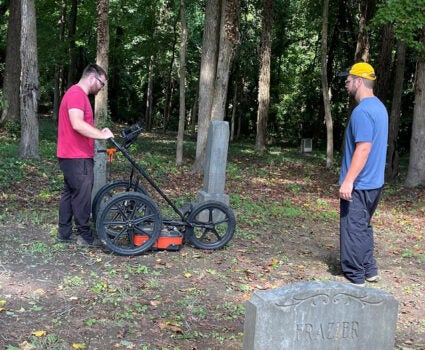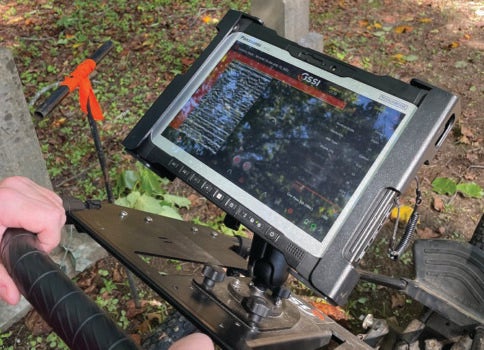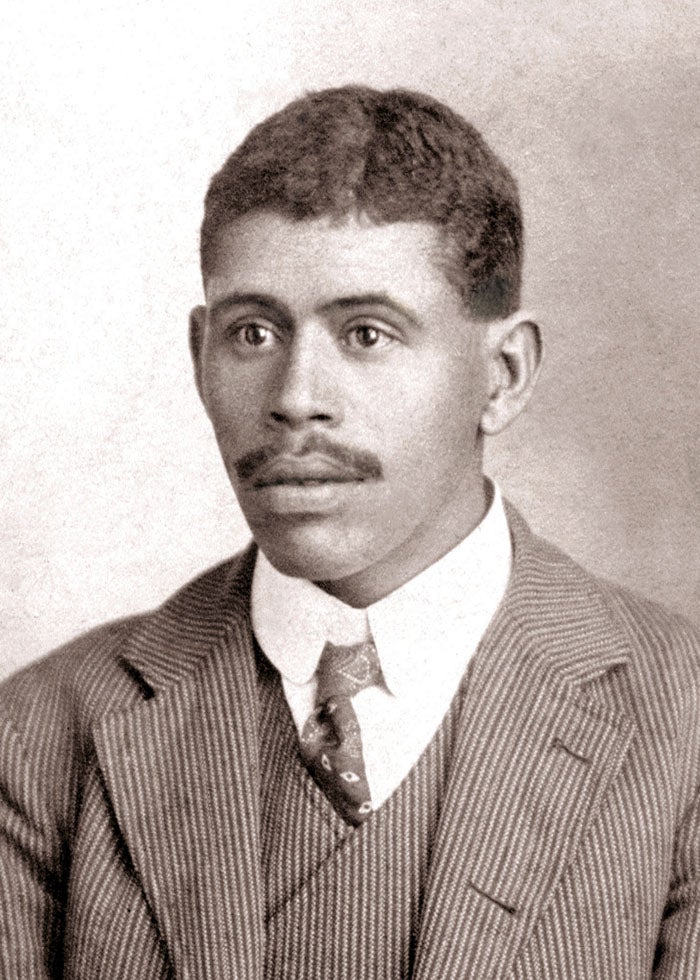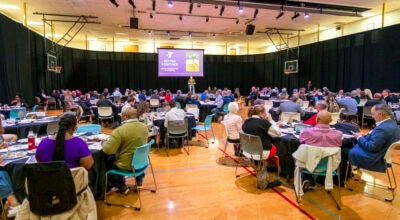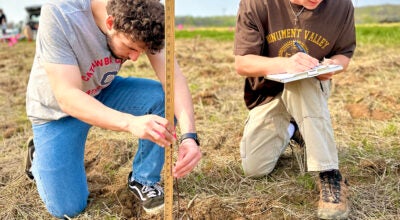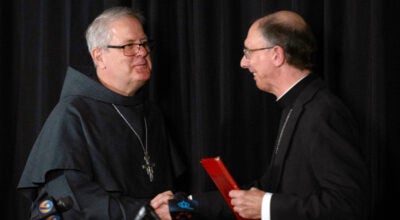“Nothing was recorded.” — Church committee gives new life to old cemetery
Published 12:10 am Saturday, January 13, 2024
SPENCER — At the intersection of Long Ferry Road and North Salisbury Avenue in Spencer used to be a church, New Hope AME Zion, where a few modest headstones mark the graves of deceased Black town residents from many years ago.
A committee formed to memorialize the space commissioned a survey team to identify potentially unmarked graves, and what they discovered shocked them.
More than 250 people were buried on that site, and but for the committee’s work, might soon be lost to history forever.
“We didn’t know (how many graves were out there),” said Vivian Norman, a New Hope AME Zion Church and cemetery committee member. “There were a lot of them that were unmarked because (surviving relatives) could not afford it. They would stack bricks or put flowers there. Most of the people in the community knew where their family members were, but they just could not afford tombstones. We knew there were graves out there, but we had no idea (how many).”
New Hope AME Zion Church is no longer located on that site. After a fire destroyed the church in 1925, congregants took advantage of a nearby schoolhouse in Heiligtown until the new building, on North Long Street, was completed in 1927.
Norman said that although the church moved, a trust and stewards team used to go over to the old site to keep it clean, adding that it fell behind as generations passed.
“There were flowers,” Norman said. “In the spring, you could see daffodils and tulips. There were just different areas where you know that there was somebody buried there, but we had no idea it was 250.”
William James, a photographer and cyclist, said he would ride his bike by the cemetery often, but had no idea what was out there.
“I was riding my bicycle by this site one day on a wintertime ride,” James said. “The leaves were off the trees, so the sun was shining all the way down to the ground. The weeds were down, and I looked over there and saw some grave markers. I said, ‘Where did those come from?’”
James got off his bike and walked back towards the headstones that he could see.
“I was astounded that there were graves back there,” James said. “It had been difficult to see, and over the years, the church members had allowed it to fall into disrepair. Nature just took over.”
James reached out to the church to see if they would be interested in preservation, and discovered they were already working on it, so he joined in.
One of the few gravesites standing on the site is George Clement, the first Black doctor in Rowan County. Clement’s wife, Sarah Parker Clement, is also buried there.
As was standard at the time, Black and white decedents were not buried in the same cemetery.
“I don’t think there is another Black cemetery in this area,” Norman said.
As the project has been underway, Norman and fellow committee member Sarah Lightner have heard from family members of those buried in the old cemetery, confirming that they know a departed loved one is out there. In fact, Lightner knows of some of her own family that is buried there.
“I have family members buried out there but I cannot say who is in this particular grave, but we plan to put a marker with all the names that we know in that space,” Lightner said.
Unfortunately for the committee, Black deaths at that time were not always recorded as meticulously as their white counterparts.
“I actually took some of the names here and went looking for information in the Salisbury Post, the records office for Rowan County and so on,” James said. “Nothing was recorded. It is like these people did not exist. It was a shock.”
The work of the committee aims to reverse history’s oversight. When the team came in and conducted the ground-penetrating radar surveys, it was able to determine not only how many graves were in the cemetery but also where they were.
“The next step is to take some trees down,” Norman said. “Our plan is to put some type of marker where each grave is identified … so that the next generation won’t have to go through what we have gone through.”
Compiling those names will be difficult. The committee will have to rely on anecdotal testimony and research from family members. Similar efforts were undertaken in Salisbury in an area on Old Concord Road known as Dixonville. Much like New Hope Zion’s cemetery, each person buried there was Black. The leader of that charge, Emily Perry, has been in contact with Norman and the committee.
“The people from Dixonville came down and were talking to us and helping us out,” Norman said. “They met with us and told us about the process. They explained to us not to get too excited because it will take some time.”
James added that they had also been working with Melissa Timo, the Historic Cemetery Specialist at N.C. Office of State Archaeology.
“She gave us a whole series of steps to take and good planning ideas,” James said. “We are in for a lengthy process here.”
So what will that process look like, and how much will it cost?
The ground-penetrating radar survey cost $4,900. It was completed by Seramur & Associates. The process involves sending pulses of electromagnetic energy or radar into the earth through a transmitter. The radar waves propagate through the subsurface and are partially reflected back to the receiver when a material with different electromagnetic characteristics is encountered below the surface. Excavated soil is used to backfill a grave shaft and can have different conductivity than surrounding undisturbed soil.
Tree and underbrush removal and landscaping at the site are estimated to cost $10,000.
The committee also plans to move two sites identified outside the boundary lines to within the cemetery. That is expected to cost $1,500. Repairs for the existing headstones are estimated to cost $5,000, and a fencing enclosure constitutes another cost of $36,000. All those projects are just part of phase one.
Phase two, which does not currently include cost estimates, involves:
- Placing white markers at sites with headstones.
- Erecting a large monument with those names.
- Installing a walking path and benches and erecting a historical marker at the entrance of the cemetery.
The committee received a grant from the Blanche & Julian Robertson Family Foundation. Norman said they have raised funds through the church and that they plan to continue. The group is also accepting donations from the community at large. Contact New Hope AME Zion Church at 704-633-7548 or email Norman at june242@carolina.rr.com.


